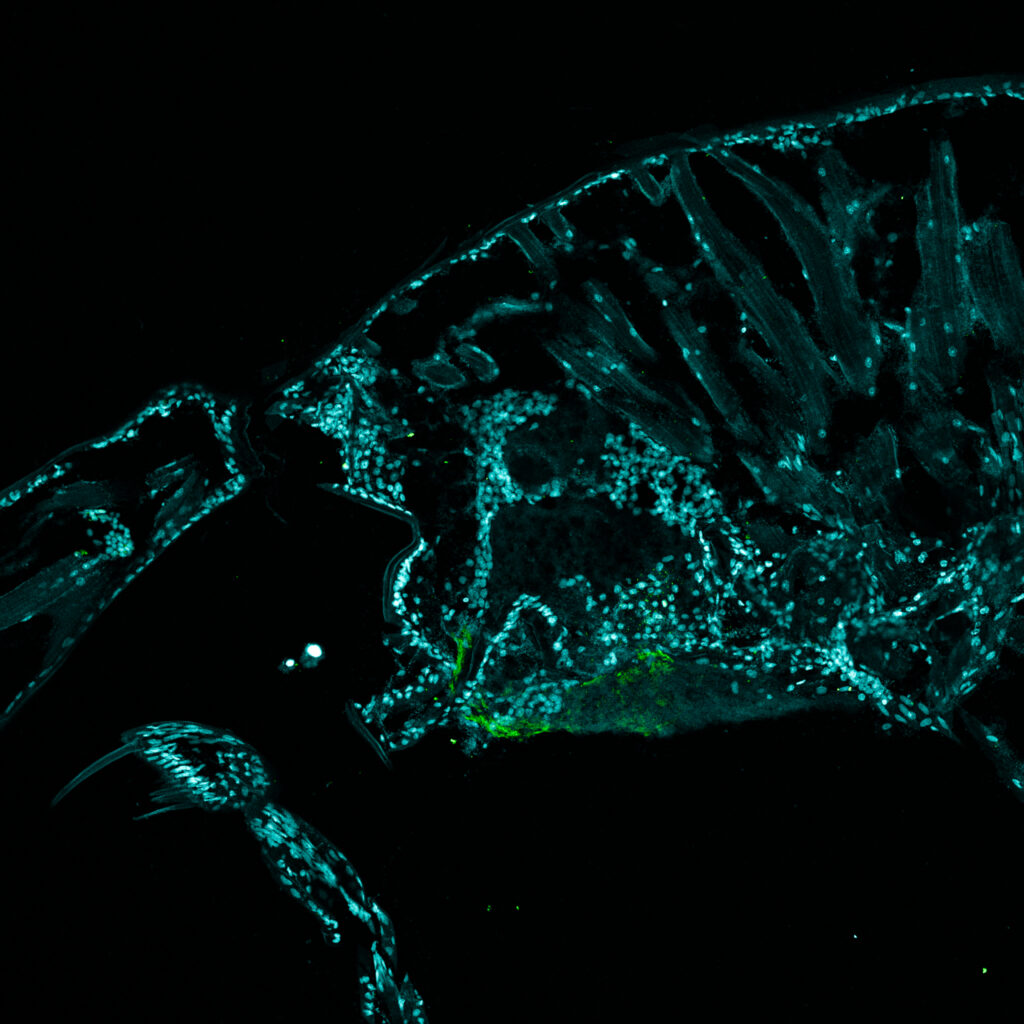Meet Ethan, a final year undergraduate student in marine biology at the University of Plymouth. Ethan is investigating whether amphipods, specifically Gammarus chevreuxi, can be used to detect toxins from harmful marine algae, including those that cause ‘red tide’ blooms. These tiny Crustaceans, commonly found in brackish waters along the UK and European coasts, could play a crucial role in marine and human health.

Ethan’s research involves growing different strains of the toxic algae Alexandrium minutum, to study how their toxicity changes over time. After lysing (breaking down) the algal cells, he will expose G. chevreuxi to the toxins, analysing their impact on the amphipods’ behaviour, stress responses, and nervous systems.
To support this work, Ethan is conducting part of his research at the Marine Biological Association, alongside MBA Post Doctoral Research Assistant, Dr Keelan Lawlor. The MBA’s expertise in harmful algae research, particularly in molecular biology, will complement Ethan’s findings on G. chevreuxi through providing deeper biological context to the toxins the amphipods are exposed to.
“The MBA offers a collaborative research environment where we can access a wide range of expertise and resources—from scientific advice to sharing reagents,” says Ethan. “This shared approach is essential for tackling the most complex aspects of this project. Additionally, the MBA’s varied facilities, all located in one place, makes the research process much more efficient, saving time and effort that would otherwise be spent moving between different labs.”
“This research is extremely interdisciplinary, with components of algae biology, molecular biology, neuroscience, and public health research”, Ethan explains. “It aligns closely with my prior research experience, allowing me to collate the skills I learned in previous projects into one! The scope of the project means we can gather a large amount of data and information from this single study, which will be crucial for shaping future research.”

Ethan’s research has the potential to transform toxin detection in developing nations where high-tech screening methods for harmful algae in seafood is limited. If G. chevreuxi responds to these toxins, it could provide a cost-effective, accessible testing method—reducing economic losses from contaminated shellfish and preventing health risks associated with algal toxins. Studying these amphipods also offers valuable insights into their interactions with harmful algae, a field that remains relatively underexplored.
Looking ahead, Ethan hopes to pursue a PhD in clinical neuroscience, specialising in developing novel understanding and treatments of human neurological disease using marine organisms and microbiota.